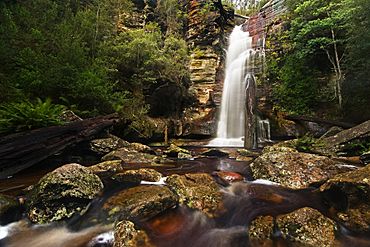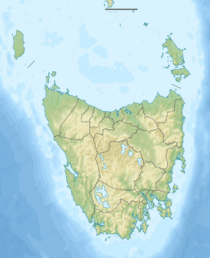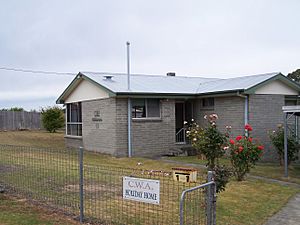Snug, Tasmania facts for kids
Quick facts for kids SnugTasmania |
|
|---|---|

Snug Falls
|
|
| Population | 1,440 (2021 census) |
| Postcode(s) | 7054 |
| Location | 30 km (19 mi) S of Hobart |
| LGA(s) | Kingborough, Huon Valley |
| State electorate(s) | Franklin |
| Federal Division(s) | Franklin |
Snug is a small town on the coast of Tasmania, Australia. It is about 30 kilometers (19 miles) south of Hobart. In 2021, about 1440 people lived in Snug. The town is mostly part of the Kingborough area. A small part of it is in the Huon Valley Council. Snug is also considered part of the larger Hobart area.
Contents
What You Can Find in Snug
Snug is a place where many people live and travel from to work in the Kingborough area. It also has a small number of visitors.
The town has two churches and the Snug Primary School. You can find the Snug Store and Baxter's IGA for shopping. There is also a butcher and a pub.
For the community, Snug has a hall and an oval. There are clubrooms for the local soccer team. You can also find the 1967 Tasmanian Bushfire Memorial here. This memorial remembers a very important event in the town's history.
Snug also has a caravan park and a plant nursery. The Snug Village is a home for older people. Kids can enjoy the Ashton Denehey memorial playground. A market is held in the town every month.
Snug's Past: A Look Back
Early Days and Naming
Europeans first explored the area around Snug a long time ago. This happened when Rear Admiral Bruni D'Entrecasteaux sailed nearby. He explored the channel that is close to Snug.
After a colony was started in Hobart Town, the Snug River was discovered. It was named because the inlet felt "snug and agreeable." This means it was a cozy and pleasant place.
By the 1820s, a port and sawmills were built nearby. Later, in the 1840s and 1850s, a small town started to grow at Snug. The Snug River Post Office opened in 1870. It was later renamed Snug in 1908.
The Carbide Factory
Around 1908, a man named James Gillies had an idea. He wanted to build a hydroelectric power plant at Great Lake. This plant would make electricity for his new way of making zinc. It would also power a "carbide" factory.
Building the "carbide" factory started in Snug in 1917. After World War One ended, the Electrona Carbide Works began making "carbide." This was calcium carbide. It was made using lime, coke, and electric arc furnaces. Carbide was used to make acetylene gas.
James Gillies faced problems finishing his projects. The government stepped in to help. They formed the Hydro Electric Department. This later became the Hydro Electric Commission, and now it is Hydro Tasmania. The carbide factory was taken over by "the Hydro" in 1924. It kept making carbide into the 1980s.
Changes at the Factory
Over time, people needed less carbide. The factory also had problems in 1979. It was then sold to a new company. This company changed it to make silicon instead of carbide. From 1988, it made a type of silicon metal. However, the factory never made enough money. It finally closed in August 1991.
Sports and Bushfires
Snug used to have its own football team. They played in the Kingsborough Football Association. They won championships in 1954, 1956, and 1957.
A very sad event happened in Snug during the 1967 Tasmanian bushfires. The town was badly damaged. Two-thirds of the houses were destroyed. Two churches and half of the school were also lost. Eleven people in the town died in the fires. After this, the local football team had to join with other clubs. They became the Channel Football Club.



